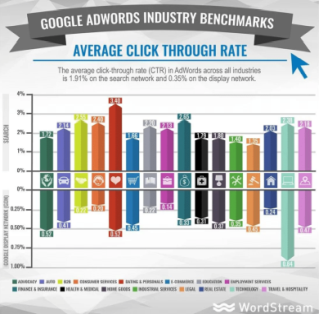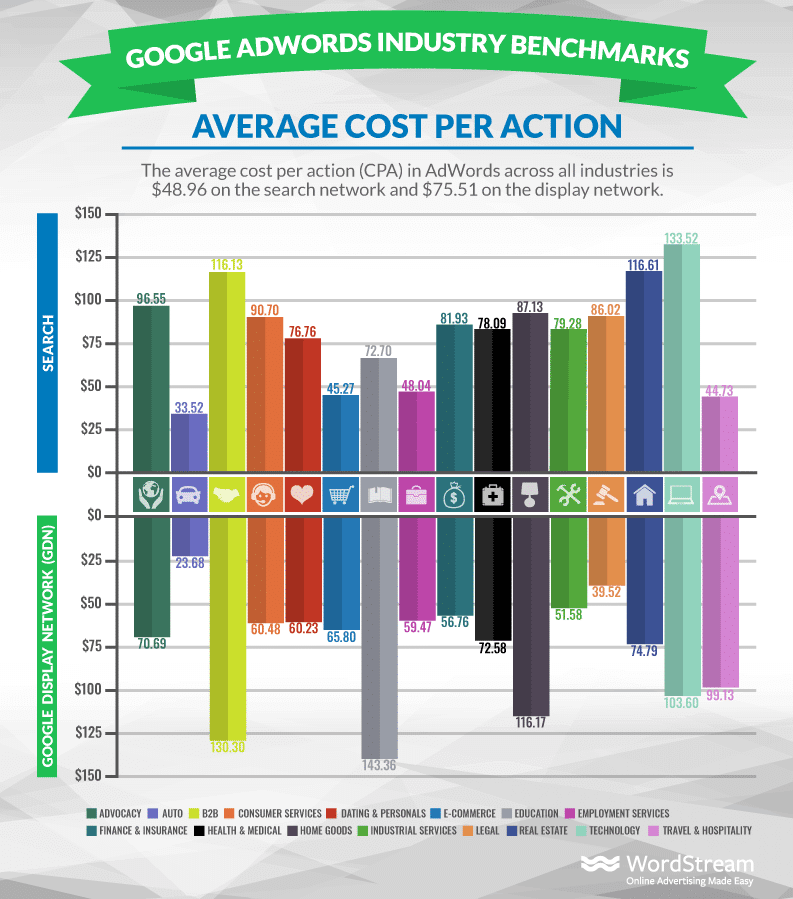Conducting a Software as a Service (SaaS) Pay-Per-Click (PPC) campaign is only one part of successful marketing. If you want to ensure your Return on Investment (ROI) you must analyze SaaS PPC campaign results to optimize its effectiveness and make sure you’re not wasting your money.
Together with one of the leading web design agencies in Chicago, we came up with 5 key metrics that help you measure the success of your SaaS PPC campaign:
- Cost per Click (CPC)
- Click-through rate (CTR)
- Impression share
- Cost per conversion
- Return on Ad Spend (ROAS)
1. Cost per Click (CPC)
CPC average amount of money you pay each time your ad gets clicked on. CPC is calculated by dividing the advertising cost by the number of clicks.
Total Cost ÷ Number of Clicks = CPC
For instance, if you have spent $10 000 and got 100 clicks, your CPC would be $100. Since it is highly unlikely your numbers will be this simple and round, you can always use a CPC calculator.
By calculating your CPC you can see the number of clicks needed for lowering your CPC rate which can be very useful for optimizing your PPC campaign budget.
2. Click-through rate (CTR)
Simply put, CTR is a proportion that indicates how often people who see your ads end up clicking it. You calculate your CTR by dividing the number of clicks your ad gets by the number of times your ad is viewed.
Number of Clicks ÷ Number of Views = CTR
For instance, if you get 10 clicks out of 100 impressions, your CTR would be 10%.
Knowing what your CTR rate is will help you understand your customers and show you which part of your PPC campaign needs changing. Having a high CTR is crucial as it directly affects your CPC, which leads us to the next important question: What is a “good” CTR?
The answer can not be precise as calculating the “good” CTR depends on many factors such as your ad’s position and the industry you’re in.
In the image below you can see how the average CTR varies from industry to industry.
3. Impression share (IS)
Impression share indicates how good is the performance of your ads compared with the impression of other ads that are in your category.
IS calculation is conducted by dividing the number of impressions your ad received by the total number of impressions your ad was eligible to receive.
Number of Impressions ÷ Total Eligible Impressions = IS
IS is a good indicator of whether your ads could reach more people if you choose to increase your bid or budget.
4. Cost per conversion (CPC)
CPC, also known as cost-per-action, indicates the cost of advertisement related to the success in reaching the goal of that advertisement.
CPC is calculated by dividing the total cost of advertisement by the number of conversions over a certain period.
Total Ad Cost ÷ Number of Conversions = CPC
For instance, if you spend $5000 in one month on an advertisement that brings you 500 new customers, your CPC would be $10.
Too high CPC indicates that something is wrong with your ads, it could be anything from targeting the wrong audience to the fact your ad simply isn’t appealing enough to its target audience.
Average CPC varies from industry to industry as is shown below.
5. Return on Ad Spend (ROAS)
ROAS is a marketing metric used for measuring the amount of revenue derived from a specific ad or campaign. Simply put, ROAS measures the effectiveness of your advertising.
ROAS is calculated by dividing your revenue by the amount you’ve spent on advertising during a specific period of time.
Total Revenue ÷ Total Ad Spend = ROAS
For instance, if you’ve generated $5000 from sales and you’ve invested $500 into advertising, your ROAS would be 10. That means that for every dollar you’ve spent, you earned $10 back.
ROAS analysis helps you evaluate the financial return of your ad campaign, acquire data on the most valuable ad campaigns and plan for future ad campaign finances.
Conclusion
As we can see, measuring the success of your SaaS PPC campaign could mean the difference between earning and losing money. It helps you detect your PPC campaign’s deficiency, plan your ad campaigns more accurately and only spend money where it needs spending.





